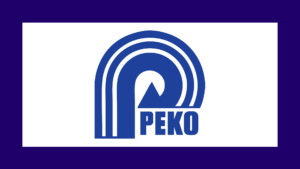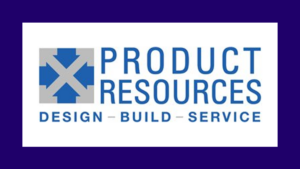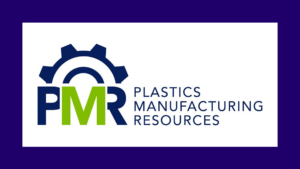Market Validation: You are Designing a Product No One Will Buy

Finish Line Product Development Services, a Friend of FORGE partner, is a product development consultancy complementing companies’ existing product development team with experts, processes and reference designs exclusively for startups and small companies. In this Tools of the Trade about market validation, Finish Line describes why startups need to validate their products before pouring money into product development.
Or, how to do Market Validation
After the publication of “The Lean Startup,” the world shifted from startups that knew what the market wanted to startups that knew how to find out what markets wanted. This revelation led to the greater importance of Market Validation (MV) methods. MV is the science of determining what the market will buy. These methods are essential to moving a product from an idea to commercial success. Skipping this step will almost guarantee that product development money will be wasted on perfecting a product that does not quite meet market needs. It could also lead to defining a Go To Market strategy (how the product gets sold) that is less than optimal in terms of customer acquisition cost.
Market Validation is the science of discovering exactly what the market will or will not pay for. Like all science, it relies on data, not assumptions, or someone’s gut feeling.
MV should be done before you start the design process — otherwise, how would you know what to design? Some would argue a startup is nothing but a series of MV experiments, each building on the previous experiment until the experiment succeeds and the company is scaled (and no longer a startup). MV is an essential tool for all entrepreneurs.
Market Validation is a Science
Lots of people have opinions. Everyone believes their opinions are correct; just ask them. Science has little use for opinions as a means of determining truth. Science goes to great lengths to avoid opinions (double-blind experimental methods). Science prefers data — specifically, data that explains a model of the truth. The point is, your opinion that something will sell is not science, and it is not data. At best, it is an untested hypothesis.
No one should invest hard-earned money on an opinion. People do, and should, invest invalidated ideas about how to make money. Ideas supported by data. Ideas that have been validated by a carefully designed set of marketing experiments.
Market validation is a scientific process of producing data that either validates a hypothesis or not. There are as many MV methods as there are different types of products or services. Which one is right for you is beyond the scope of this paper. What follows are the different methods that can be used. It’s up to you to choose the one that is right for your product — or is right for the stage of development your product is in.
The days of the lone iconoclastic inventor working on the next big thing in his garage are long gone. In today’s world, many people have the same idea as you. They have money, brains, and connections just like you. They are working to bring this product to the market as you read this. They will compete with you, and the customer will buy the product that best meets their needs. If your version of the “idea” meets their needs better than your competitor’s version, then you will win; if not, you will likely fail or be only a marginal player in a bigger market.
For example, many people had the idea of a digital music player long before Apple’s iPod ever came out. Apple was not first to market. Someone else had filed a patent on digital music players before (1981 – UK patent 2115996) the iPod was released in 2001. Large and small companies released almost identical products previously, during, and after the iPod.
Why did Apple succeed when everyone else did not? Because Apple understood precisely what the market wanted. Yes, the market wanted a digital music player — many different people well followed that much. However, Apple was the only company that fully understood precisely what kind of digital music player the market wanted. The iTunes Store, the UI, the industrial design, the brand, the Apple stores, etc. All of these seemingly small details added up to something essential. All the others were approximately right about what would sell, but only Apple knew exactly what would sell.
Preparing for Market Validation:
Most startups do multiple MV experiments. The first ones are simple and answer very basic questions. The latter ones are more complex, may rely on MVPs (Minimally Viable Products), and answer more complex questions.
Research
It is always a good idea to do some basic research on the product and the industry. How big is the market — the Total Addressable Market (TAM)? What products already exist and what other startups are working to solve the same problem? Is the market fragmented or concentrated?
Write it Down
Document the idea in the form of a requirements document (Request our free template). Documenting the requirements for the product will illuminate the questions that the MV experiment will need to answer.
Sometimes it is not the product itself that is innovative; instead, it is the GTM (Go To Market) strategy that is innovative. Taxi services is a simple product that has existed for at least 100 years, and there’s nothing innovative about paying someone to drive you from point A to point B. However, how customers access this service and who provides these services are the innovative parts of Lyft and Uber. These companies’ innovation was not the product itself. These companies innovated the GTM strategy: how customers access the services (through an app) and who provides this service (independent self-organizing workforces).
How will you make money
Next, write down exactly how you will make money. Make the product for $1, sell it for $2, the cost of sales $0.25, etc. Write down all the assumptions for making money, which is called a pro forma profit and loss statement. These will be the assumption that the MV experiments will test. Can you really make it for $1? Can you spend $0.25 on sales and marketing and create $1 of revenue? Will your channel partner be able to sell your product? What are all of the assumptions about your product and your GTM strategy? Each assumption that could affect the profitability of the company needs to be validated:
- Production Cost
- Retail Price
- Customer Acceptance
- Usability
- Customer Acquisition Cost
- GTM Strategy
- Product Performance
Plan
You don’t have to validate everything in one experiment. Break it down into small chunks. In experimental design, we call these chunks a “single variable.” If you try to test two variables (change two things at once) in one experiment, you will never know which caused the result or even if they canceled each other out.
For each assumption, choose the appropriate MV method (see below). It is best to choose the easiest to test and the most important assumptions first.
Market Validation Methods
Surveys
Probably the easiest of all market validation methods is a survey. Simply ask a customer if she will buy your product and for how much. Surveys are easy to do in person or through emails, and they do often result in meaningful data and insight. However, one should be aware that they have significant limitations.
Asking someone “if” they will buy something is not the same as someone actually buying something. People tend to have the intention to buy all kinds of things, but when it comes to actually make a decision about where they are going to spend their limited funds, they make choices about what to buy and not buy. Will your product ever make the list? A survey is a poor way to determine this question.
You can also suffer from the “do I look fat in this dress” syndrome. People tend to answer questions in a way that will not offend the questioner. We are all social creatures programmed to act in a way that creates acceptance from the group.
Surveys are also not very useful when the product or service is complex or iconoclastic. The iPad was a classic example. People viewed it as a giant iPhone. Who would want to lug around a phone that big? It took a lot of education (marketing) to show people how this device would fit in between a laptop and a phone and get them to realize when it should be used. Point is, a survey would have shown no interest in the product.
For these reasons, surveys tend to have limited value in determining if a product will sell or for what price or market share. Surveys are best used for “either-or” questions. Would you prefer red or blue? Would you prefer to pay $10 less or have this feature?
Presentations
A Powerpoint presentation can be an effective tool in B2B (Business to Business) markets that are highly concentrated. Presenting in front of a group of decision-makers and influencers can often bring out issues and insight that is difficult to obtain through any other methods. Markets are much more complex than they first appear. Presenting your product and GTM strategy to a group of experts is almost certain to create value.
With this MV method, you are presenting to your customer(s). Typically, it is a team composed of the decision-maker (the one who signs the PO) and her influencers.
Some tips for using this:
- When you’re going to give the presentation, bring at least the person who will give the presentation and an observer. The observer should plan to do very little talking. Her job will be to assess the reaction of the group to each concept presented.
- Present the problem first. Understanding the problem is at least as important as understanding the solution. Solicit feedback from the group about the problem statement.
- Ideally, you have an MVP of the product — at least a rendering or mockup. Maximize the interaction between the group and the MVP. During this interaction, push for objections. Ask probing questions.
- Solicit input from all members of the group — especially influencers that may be less vocal.
- Keep in mind, this is less about a “sale” and more about collecting information. Even though you have an “ask” (see below), your primary goal is to collect information.
- Decide what your ask is. Ideally, you want the ask for the PO — even if you are not near the point of being able to fill this PO. The only way to truly avoid the “do I look fat in this dress” syndrome is to ask for the sale.
- Once the offer is presented, push for objections. Price too high/product does not have enough value. Product too difficult to use or implement. Integration difficulties. Resistance to change. Etc…
Getting a PO is great market validation, however, it is best to keep pushing. Ask for a down payment on the PO. Ask for direct investment in company equity (get a lawyer first). Present to the next team with a higher price and compare results. Change a product feature and compare and contrast the two presentations.
Crowdfunding
CF can be a great way to validate products. It also can be used to raise money, although the cost to acquire a customer is going to be much higher than if you had an actual product for sale — or if people thought you had an actual product for sale. It is typical for CF cost to exceed CF revenue. For this reason, it’s not advisable to consider CF as a primary funding strategy except in some rare circumstances.
In the early stages, the MVP method (see below) is likely to be much less costly and much quicker than crowdfunding for market validation experiments. First, the CAC (Customer Acquisition Cost) will be lower as people think you have a product for sale, as compared to them thinking that one day, many months from now, maybe they will get a product from you. Second, you don’t owe anyone a product — which will cost money to make.
CF is not new. It has been around for at least 100 years. The only thing that is new is the idea that anyone can purchase (or offer for sale to anyone) a product that did not actually exist. Before the great recession, such transactions were largely restricted to companies, governments, and qualified individuals (aka rich people). After the Great Recession, this restriction was largely lifted.
In many industries, it is common for customers to pay for the development of the products they need. Some of the things that the military buys started as product development projects that were paid for by the government: planes, tanks, etc. If you buy a custom house, you pay for it to be designed and developed. Apple pays Foxconn to develop the products that it manufactures for Apple. Asking a customer to fund product development is a strategy that many companies can use — not just consumer companies.
You don’t have to use a platform to do CF. It can save a lot of legal issues — especially if you are taking money from nonqualified individuals (ask your lawyer). If your customers are companies, though, there really is no point in using a platform.
Whether or not you use a platform, you will have to spend money on sales and marketing. Without promoting an offer, it’s unlikely anyone will see it, and if they do not see it, how can they accept the offer? Expect to spend significant time and money on promoting the offer, especially if the market is highly fragmented.
If you have a small number of possible customers (concentrated market), then you will want to use account-based marketing methods, as compared with mass marketing. Find the decision-makers and influencers and set up a meeting — in person or on the web. Give them a presentation (see the section above) and ask for a PO. If you get a PO, ask for payment in advance and/or direct investment in the company. It’s a good idea to make a list of all possible customers and rank them. Start with the lowest-ranked — you will learn a lot at each presentation, and this will likely modify the offer/product/presentation. You will likely only get one chance, so by the time you get the higher ranked customers, your presentation will be polished.
In a highly fragmented market, it will not be practical to give each potential customer a presentation. You will have to build some kind of web presence — a CF site like KickStarter/Indiegogo or just a landing page. You will also have to spend money on promoting this site; PPC, AdWords, emails, etc. Create at least two sites with slightly different product concepts — the one variable experiment. Promote each site equally. The site that gets the most funding is the winner. In all likelihood, you will have to do multiple A/B testing to get to a final set of requirements for the product.
One word of caution: Many consumers get very upset when the product does not arrive when promised — which happens to almost all CF companies. When they do, they start trashing the brand. We recommend that you either give the money back immediately or brand each experiment under a brand that you do not intend to use.
Also, if you take any investment money of any kind, get a lawyer. And not just any lawyer; choose one that ONLY works with technology startups.
MVPs
A MVP (Minimally Viable Products) is a version of a product with just enough features to satisfy early customers and provide feedback for future product development. MVPs are used for market validation experiments — they are never intended to go into production, sell at volume, or make a profit.
MVPs come in two forms: real and digital. A real product is something that can be used — it really exists. A digital product only exists as a rendering or description of the product. A digital MVP can be described and seen (at least digitally) but not actually used by a customer. Digital MVPs can be built with very little development cost (compared to real development), and they can be built quickly, sometimes in a matter of hours. A potential customer will perceive the product as a real product — at least until you get the market validation data you need.
It is beyond the scope of this white paper to discuss how to develop MVPs. For purposes of this paper, we will just assume you have your MVP developed.
The first MV experiments often start with a purely digital MVP — renderings and/or descriptions. These digital MVPs can be used to answer some very basic questions, and you don’t need a real product. Examples of questions that can be answered by a digital MVP are:
- How much will it cost to sell the product?
- How many units can I sell?
- How much can I sell my product for?
- Do customers prefer feature A or Feature B?
- Do customers prefer this look or that look?
- Does my USP (Unique Selling Position) resonate with customers, or which one does?
- Is this the right media to broadcast my USP?
Digital MVPs MV experiments can sometimes answer these questions:
- Will this GTM strategy work?
- Will investors invest in this product?
How much will it cost to sell the product?
CAC (Customer Acquisition Cost) is often a very important metric when it comes to a startup’s financial performance. Products do not sell themselves — it costs money to sell things. Investors will often want to know the CAC. You will not be able to calculate the profitability of the business without knowing this cost. It’s possible the CAC is more than the gross margin.
A digital MVP is a great way to validate the CAC. Put up a website (use a different brand identity so as not to erode the primary brand) with the digital MVP. Drive some traffic to the site — may be some blogs, AdWords, or PPC — and see how much it costs to get people to click the “Buy Now” button. When they push the “Buy Now” button, simply state that the product is out of stock and ask for their email.
How many units can I sell?
Market share can be validated with a digital MVP. Repeat the steps above in “How Much Will it Cost to Sell the Product” and simply divide the website impressions by the number of “Buy Now” button pushes. Then, multiply this percentage by the TAM (Total Addressable Market). This method assumes that only ideal customers are viewing the website, which should be true for a new landing page only being promoted with highly targeted marketing.
How much can I sell my product for?
Developing an MDC (Market Demand Curve) is a combination of the two methods above. An MDC can be plotted by running multiple “Buy Now” MV experiments, each at a different sales price, and calculating the market share for each experiment.
Do customers prefer feature A or Feature B?
Do customers prefer this look or that look?
Does my USP (Unique Selling Position) resonate with customers, or which one does?
A/B testing is a simple matter of running two “How Much will it Cost to Sell the Product” MV experiments and comparing the results of the two tests. Higher click-through rates, viz lower CAC, indicate greater preference.
Is this the right media to broadcast my USP?
Digital MVPs are great for determining the most productive media for sending your USP message. Run the same USP through multiple media (blog site, Adwords, different PPC platforms, banner ads). Use a separate landing page for each media experiment. The media with the lowest CAC is the most productive media for this USP.
Keep in mind that media often saturates — that is, a specific media may only be able to produce so many referrals in a particular time frame. You can test for saturation by increasing the media spend. If you double the spend but do not see double the referrals, then the media is becoming saturated. Media saturation means you will have to use less efficient media in order to scale sales. Keep this in mind when using a CAC in financial projections — you will need to use a blended CAC from each media.
Will this GTM strategy work?
Sometimes digital MVPs can be used to validate GTM (Go To Market) strategies. Unless your GTM strategy is a significant part of your disruptions, you will likely validate your GTM while validating the product. Occasionally, the GTM strategy is the disruption: Uber, Amazon, etc. In these cases, the product does not need to be validated; it’s the GTM that needs to be validated. So instead of a digital MVP, you have a digital GTM.
Creating and validating GTMs is its own methodology and beyond the scope of this white paper. However, if this applies to you, you may wish to read: How to Design a Go To Market Strategy for Your Startup.
Will investors invest in this product?
In most startups, if you can’t raise capital, you will not succeed — regardless of how good your idea is. Even if you have a rich uncle, there can be certain advantages to talking to, or even having, investors. Most early investors (but not necessarily late-stage investors) will be able to offer useful feedback on your product and business plan. For more information on the stages of investment in a startup, see: How to Raise Money for Your Startup.
Creating a digital MVP and presenting it to early-stage investors often results in significant learning. In many startups, your early-stage investors are individuals who have unique information/contacts within the industry — sometimes called “smart money” investors. Presenting to them is free expert consultation.
Similar to the other MVP experiments, you will need some way to communicate your MVP and USP — typically a landing page. You’ll need to do some research to identify the investors — LinkedIn is a great tool for this search. A quick email asking for feedback will get the conversation started. If you really need investment (and if you don’t, please call me), you can ask for the close after getting their feedback.
Real MVPs
Once you have validated price, demand, USP, and media with a digital MVP (or many digital MVPs), your next step is to design a real MVP — one that can be used by a customer.
Designing an MVP is beyond the scope of this white paper (but there are other white papers on our website that do discuss this topic). However, you will want to think carefully about what experiment you should run first before writing the requirements to the real MVP. Product development is expensive and will take a long time. The purpose of real MVP is to make sure you are designing the right product so you only incur this cost and time once.
Before committing to MVP requirements, list all of the risks:
- Technology risk
- User Interface
- Reliability
- Usability





